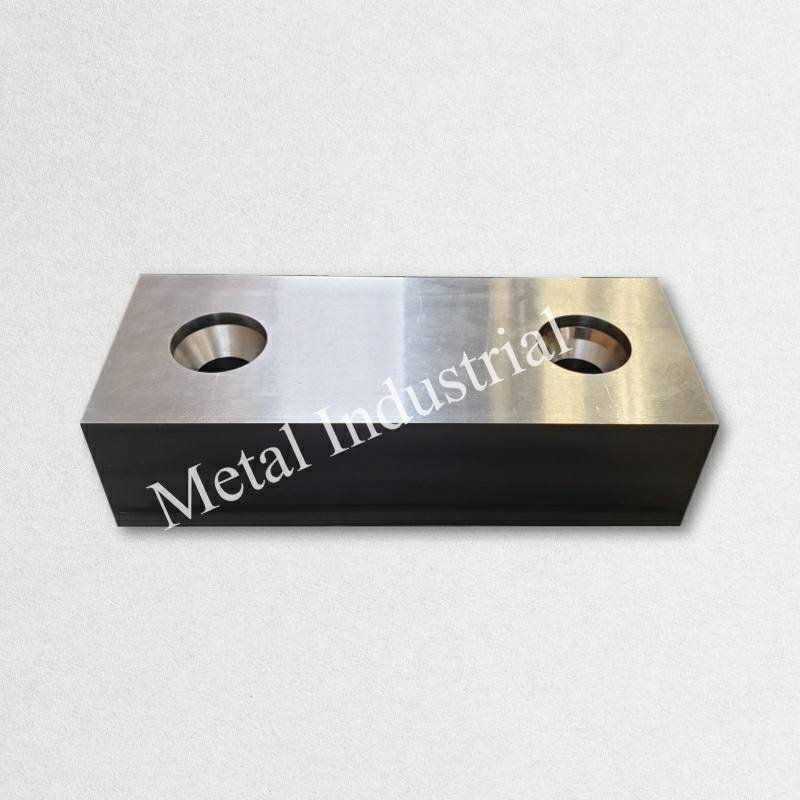
العناية المناسبة شفرات قص الخردة المعدنية يضمن عمل معداتك بكفاءة. عند صيانة شفراتك، يقلّ وقت التوقف عن العمل وتحصل على قطع أكثر سلاسة. العناية بشفراتك توفر المال من خلال إطالة عمرها الافتراضي ومنع الأعطال المفاجئة، مما يحافظ على سلامة فريقك.
النقاط الرئيسية
- افحص شفرات قصّ المعادن الخردة يوميًا بحثًا عن أي شقوق أو تشققات أو أي تلف. يساعدك هذا على اكتشاف المشاكل مبكرًا ويحافظ على سلامة جهازك.
- نظّف شفراتك وزيّتها بعد استخدامها. هذا يمنع الصدأ، ويقلّل من التآكل، ويساعدها على القطع بسلاسة ودقة.
- اضبط خلوص الشفرة وقوة القطع ومحاذاتها بانتظام. هذا يساعدك على الحصول على قطع نظيفة ويطيل عمر الشفرة.
- شحذ الشفرات بعناية باستخدام الأدوات والطرق الصحيحة. هذا يمنع التلف ويحافظ على جودة قطع الشفرات.
- استخدم معدات السلامة عند التعامل مع الشفرات، واحفظها في أماكن جافة وباردة. هذا يساعد على منع الإصابات والصدأ.
- غيّر الشفرات فورًا إذا لاحظتَ شقوقًا، أو تآكلًا زائدًا، أو جروحًا سيئة، أو أصواتًا غريبة. هذا يُساعد على منع الحوادث ويحافظ على سلامة جهازك.
- فكّر في استخدام شفرات مُخصّصة للأعمال الخاصة. هذا يُساعدك على الحصول على قصّات أفضل، وتقليل الهدر، وتوفير المال مع مرور الوقت.
- استخدم قائمة تحقق للصيانة اليومية والأسبوعية. هذا يساعدك على تنظيم أعمالك، ومنع الحوادث، والحفاظ على أداء مقصّ المعادن لديك.
أساسيات شفرة القص
ما هي شفرات القص الخردة Metal؟
تُستخدم شفرات قصّ الخردة المعدنية في آلات قطع المعادن. تُعد هذه الشفرات بالغة الأهمية في أعمال إعادة التدوير وتشكيل المعادن. عند استخدام مقصّ المعادن، تقطع الشفرة الصفائح المعدنية أو العوارض أو الأنابيب بقوة كبيرة. تُصنع معظم الشفرات من الفولاذ عالي السرعة، أو الفولاذ السبائكي D2، أو كربيد التنغستنتجعل هذه المواد الشفرة صلبة ومتينة للقيام بالأعمال الشاقة.
تخضع شفرات القص Metal للمعالجة الحرارية لجعلها أقوى وأطول عمرًا. هذا يساعد الشفرة على الحفاظ على حدتها بعد عدة قطع. تتوفر هذه الشفرات في آلات قص مختلفة، مثل مقصات الضغط الجانبي، ومقصات القنطرية، ومقصات القص المائلة. تستخدم كل آلة الشفرة بطريقة تناسب حجم وشكل الخردة المعدنية.
تصميم الشفرة ومعالجتها الحرارية يُساعدانها على إجراء قطع دقيقة ونظيفة. العناية بشفرتك تُقلل من الهدر وتُعطي حوافًا أكثر نعومة. شكل الشفرة ومادتها والعناية بها بانتظام تُساعدك على تحقيق أفضل النتائج في مشاريعك المتعلقة بتشكيل المعادن.
القضايا الشائعة
قد ترى بعض المشاكل مع شفرات قص المعادن عند استخدامها، قد تُفاقم هذه المشاكل جروحك وقد تكون غير آمنة. إليك بعض المشاكل الشائعة:
- التقطيعقد تنكسر قطع صغيرة من حافة الشفرة. يحدث هذا عند استخدام مادة شفرة غير مناسبة، أو استخدام قوة زائدة، أو قطع معادن صلبة جدًا. قد يؤدي التقطيع إلى خشونة الحواف وزيادة النتوءات على المعدن المقطوع.
- المحاذاة غير الصحيحةإذا لم تكن الشفرة مصفوفة بشكل صحيح، فقد تحصل على قطع غير متساوية، أو نتوءات إضافية، أو أصوات غريبة. قد يؤدي عدم المحاذاة إلى حواف خشنة أو مائلة، مما قد يؤدي إلى اختلاف حجم القطع.
- الشقوققد تظهر تشققات في الشفرة نتيجةً للإجهاد أو سوء المعالجة الحرارية. تُضعف هذه التشققات الشفرة وقد تُسبب كسرها فجأةً.
- بلادةمع مرور الوقت، تصبح الشفرة أقل حدة. فالشفرة غير الحادة تجعل قطع المعدن أصعب، وقد تترك حوافًا خشنة أو غير مكتملة.
- نتوءات وأخطاء الأبعاد:قد يؤدي عدم المحاذاة أو عدم الاتساق إلى ظهور نتوءات صغيرة خشنة على حافة القطع. قد تلاحظ أيضًا أجزاءً ليست بالحجم المناسب.
فحص شفراتك بانتظام واستخدام المعالجة الحرارية الجيدة يمكن أن يساعد في منع هذه المشاكل. إذا اكتشفتَ مشكلةً مبكرًا، يمكنك إصلاحها قبل أن تتفاقم أو تُسبب خطرًا.
عندما تعرف آلية عمل شفرات قص المعادن والمشاكل التي يجب الانتباه لها، يمكنك الحفاظ على أداء أجهزتك بكفاءة. العناية الجيدة والمعالجة الحرارية الجيدة تساعدان على إطالة عمر شفرتك وتحسين أدائها.
أهمية صيانة القص

لماذا الصيانة مهمة
أنت تساهم في الحفاظ على شفرات قصّ الخردة المعدنية في حالة جيدة. الصيانة الدورية تُطيل عمر الشفرات، كما تُحسّن أداء آلتك. عندما تعتني بشفراتك، يقلّ تعطّلها، ما يعني أنك تُصلح مشاكل أقل وتُنجز عملاً أكثر.
العناية بالشفرات تحافظ على سلامة الأشخاص أيضًا. فالشفرات الحادة تقطع المعدن بدقة ولا تلتصق. أنت وفريقك أكثر أمانًا باتباع الخطوات الصحيحة. تتميز الآلات بميزات أمان، ولكنها تعمل بشكل أفضل إذا حافظت على كل شيء في حالة جيدة.
الصيانة الدورية توفر لك المال أيضًا. الشفرات الحادة والمستقيمة لا تحتاج إلى استبدال متكرر. كما تتجنب دفع تكاليف إصلاحات كبيرة. فحص شفراتك بانتظام يساعدك على اكتشاف المشاكل الصغيرة مبكرًا.
نصيحة: افحص شفراتك يوميًا. نظّفها بعد الاستخدام وابحث عن أي تلف. هذه العادة البسيطة كفيلة بمنع معظم المشاكل.
مخاطر الإهمال
إذا أهملت الصيانة، فأنت تُعرّض الأشخاص والآلات للخطر. قد تتفاقم المشاكل بسرعة وتُسبب مشاكل كبيرة. إليك بعض المخاطر إذا لم تعتني بشفراتك:
- يمكنك الحصول عليها قطع أو إيذاء إذا لمست شفرات باهتة أو مكسورة.
- يمكن أن تتطاير قطع المعدن وتضرب عينيك أو وجهك إذا لم ترتدي نظارات السلامة.
- إذا لم ترتدي قفازات أو أكمامًا طويلة، فقد تتعرض لجروح أثناء تغيير الشفرات أو تنظيفها.
- عدم معرفة كيفية استخدام الآلة يزيد من احتمالية وقوع الحوادث.
- إذا لم تكن الشفرات مشدودة بشكل جيد، فقد تنزلق وتتسبب في وقوع حوادث مفاجئة.
| فئة المخاطر | وصف | التأثير على السلامة والعمليات |
|---|---|---|
| التعرض للآلات المتحركة | إن العمل بالقرب من الآلات الجارية يزيد من احتمالية الإصابات أثناء إجراء الإصلاحات. | يمكن أن يؤدي ذلك إلى مزيد من الحوادث وإصابة الأشخاص. |
| الإصلاحات الطارئة مقابل الصيانة الوقائية | تتم إصلاحات الطوارئ في أماكن غير آمنة، ولكن الصيانة المخطط لها هي الأكثر أمانًا. | تساعد الصيانة المخططة على تقليل المخاطر وتوفير الوقت. |
| فشل كارثي في المعدات | يمكن للشفرات التي لا يتم الاعتناء بها أن تنكسر فجأة. | يمكن أن يؤدي هذا إلى إيذاء الأشخاص وإيقاف العمل وكسر الآلات. |
| عدم الكفاءة التشغيلية | يمكن أن تتسبب الشفرات القديمة أو السائبة في التشويش وتسبب قطعًا سيئة. | إنك تضيع الوقت والمال في حل هذه المشاكل. |
| عوامل التصميم والتدريب | الآلات التي يسهل استخدامها والعمال المدربون هم الأكثر أمانًا. | يقضي الناس وقتًا أقل في الخطر ويرتكبون أخطاء أقل. |
| الوقت المستغرق في مهام الصيانة | إصلاح الأشياء في كثير من الأحيان يعني قضاء المزيد من الوقت في مناطق غير آمنة. | مزيد من الوقت حول المخاطر ويتم إنجاز قدر أقل من العمل. |
إهمال الصيانة لا يضرّ بجهازك فحسب، بل قد يضرّك أنت وزملاءك في العمل أيضًا. فالإصلاحات الطارئة أخطر من تلك المُخطّط لها. ستخسر وقتًا ومالًا إذا تعطل جهازك أو تعرّض لقطعٍ بالغ.
ملاحظة: اتبع دائمًا قواعد الشركة المصنعة للصيانة. استخدم الأدوات المناسبة وارتدِ معدات السلامة اللازمة للحفاظ على سلامتك.
فحص شفرات القص الخردة Metal
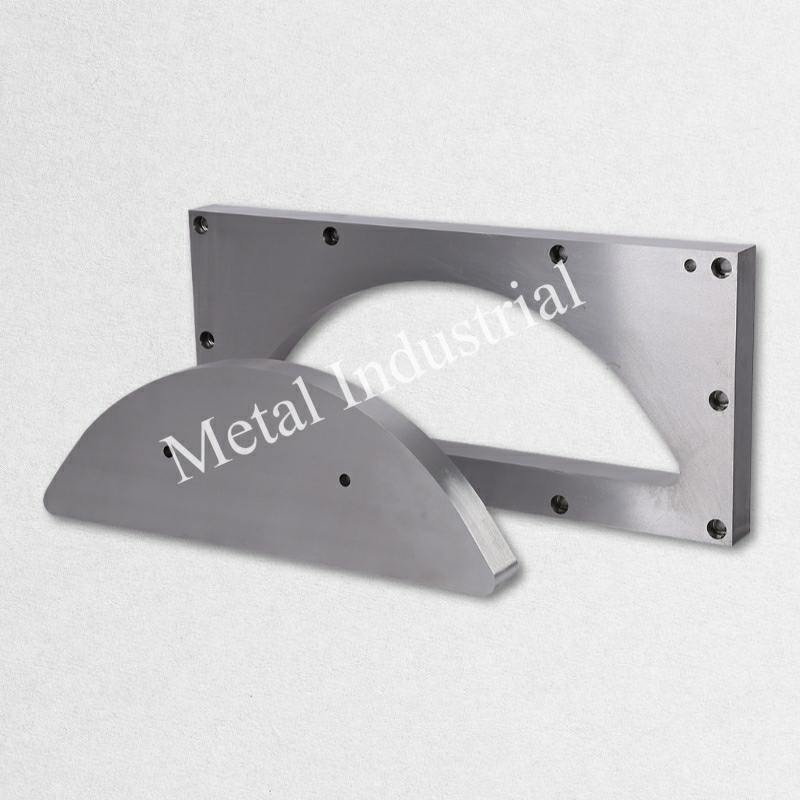
للحفاظ على شفرات قصّ المعادن لديك تعمل بكفاءة، عليك فحصها باستمرار. اكتشاف المشاكل مبكرًا يساعد على تجنّب مشاكل أكبر لاحقًا. يوضح لك هذا الجزء كيفية فحص شفراتك، وقياس التآكل، ومعرفة كيف يمكن أن يؤثر التلف على عملها.
الفحوصات البصرية
عملية التفتيش خطوة بخطوة
يجب عليك فحص شفراتك يوميًا. إليك الخطوات التي يجب اتباعها بعد استخدام جهازك: 1. أوقف تشغيل الجهاز وتأكد من بقائه متوقفًا أثناء الفحص. 2. امسح الشفرة بقطعة قماش ناعمة للتخلص من الغبار والقطع المعدنية والزيت. 3. انظر جيدًا إلى حافة الشفرة وسطحها. استخدم مصباحًا يدويًا إذا كنت بحاجة إلى مزيد من الضوء. 4. ابحث عن الشقوق أو الرقائق أو القطع المفقودة على حافة القطع. 5. تحقق من وجود صدأ أو بقع تشبه التآكل. 6. تأكد من إحكام ربط جميع البراغي وأدوات التثبيت. 7. إذا أمكن، أدر الشفرة أو حرّكها لرؤية جميع الجوانب. 8. استمع لأي أصوات غريبة أو اهتزازات عند تشغيل الجهاز، فقد يشير ذلك إلى تلف خفي.
نصيحة: اجعل فحص شفراتك عادة يومية. هذا يساعدك على اكتشاف المشاكل الصغيرة قبل أن تتفاقم.
أنواع شائعة من الأضرار البصرية
عند النظر إلى شفرتك، قد تلاحظ أنواعًا مختلفة من التلف. إليك أكثرها شيوعًا: الشقوقخطوط رفيعة على طول النصل. قد تتسع الشقوق وتكسر النصل. رقائق البطاطس: قطع صغيرة مفقودة من الحافة. الشظايا تجعل القطع خشنة وغير ناعمة. تآكل: صدأ أو حُفر على سطح الشفرة. التآكل يُضعف الشفرة ويُقصّر عمرها. بلادة: تبدو الحافة مستديرة أو مهترئة. الشفرات الباهتة تتطلب قوة أكبر وتترك قطعًا خشنة. المناطق المنحنية أو المشوهةالنصل ليس مستقيمًا. انحناءه يُسبب قطعًا غير متساوية وتآكلًا أكثر.
يجب عليك إصلاح هذه المشاكل فورًا. تجاهلها قد يؤدي إلى جروح خطيرة، أو كسر جهازك، أو حتى الإصابة.
قياس التآكل
أدوات لقياس تآكل الشفرة
تحتاج إلى أدوات خاصة لمعرفة مدى تآكل شفرتك. الأدوات الأكثر شيوعًا هي: مقاييس الاستشعار:شرائح معدنية رفيعة للتحقق من الفجوة بين الشفرة والماكينة. ميكرومتر:أدوات لقياس مدى سمك حافة الشفرة. الفرجار:أدوات لقياس عرض وعمق الشفرة. قوالب الشركة المصنعة:دليل لمقارنة شكل الشفرة الخاصة بك بالشكل الأصلي.
تساعدك هذه الأدوات على معرفة ما إذا كانت الشفرة الخاصة بك لا تزال جيدة أم تحتاج إلى تغيير.
كيفية قياس التفاوتات
للحفاظ على نظافة وسلامة قطعك، يجب عليك التحقق من تفاوتات الشفرة. إليك كيفية القيام بذلك: 1. استخدم مقياس تحسس للتحقق من المسافة بين الشفرة والجزء الثابت. 2. قارن أرقامك بدليل الجهاز أو بقواعد صانع الشفرة. 3. استخدم ميكرومترًا أو فرجارًا للتحقق من سمك الشفرة في عدة نقاط لاكتشاف أي تآكل غير متساوٍ. 4. ضع قالب الشركة المصنعة على الشفرة للتحقق من تطابق شكلها مع الأصل.
إذا أظهرت أرقامك أن الشفرة رقيقة للغاية أو الفجوة كبيرة للغاية، فقد تحتاج إلى إصلاح الشفرة أو استبدالها.
متى يجب استبدال الشفرات بناءً على القياسات
يجب عليك الحصول على شفرة جديدة إذا: - كان السُمك أقل مما يقول المُصنِّع إنه آمن. - كانت الفجوة كبيرة جدًا والقطع غير جيدة. - كان شكل الشفرة لا يتطابق مع القالب. - لقد شحذت الشفرة مرات عديدة حتى أصبحت غير آمنة بعد الآن.
ملاحظة: إن فحص الشفرات بشكل متكرر وقياسها بشكل صحيح يساعدك على إيقاف المشكلات المفاجئة ويحافظ على عمل الماكينة بشكل جيد.
تحديد الضرر
أنواع تلف الشفرة
يمكنك العثور على أنواع عديدة من التلف عند فحص شفراتك. أهمها: الشقوقتبدأ هذه الشقوق صغيرة، لكنها تكبر بسرعة. غالبًا ما تظهر الشقوق بعد قطع أشياء صلبة جدًا أو نتيجة الاستخدام المتكرر للشفرة. رقائق البطاطس:يحدث هذا إذا ضربت الشفرة شيئًا ما بقوة شديدة أو لم تكن حادة بدرجة كافية. التشويه:تنحني الشفرة خارج شكلها، عادةً بسبب ارتفاع درجة حرارتها أو بسبب الضغط غير المتساوي. تآكل:يتسبب الصدأ في تآكل الشفرة، مما يجعلها ضعيفة وسهلة الكسر. التآكل المفرط:تصبح الحافة رقيقة جدًا أو مستديرة بعد الاستخدام المتكرر.
تأثير الضرر على الأداء
كل نوع من الضرر يؤثر على كيفية عمل النصل الخاص بك:
| نوع الضرر | التأثير على الأداء | مخاطر السلامة |
|---|---|---|
| الشقوق | يمكن أن يؤدي إلى كسر الشفرة فجأة | عالي |
| رقائق البطاطس | جعل القطع خشنة وغير متساوية | واسطة |
| التشويه | يجعل القطع غير مستقيمة أو متساوية | واسطة |
| تآكل | يجعل الشفرة ضعيفة ولا تدوم طويلاً | واسطة |
| التآكل المفرط | التخفيضات ليست جيدة، والاختناقات تحدث أكثر | عالي |
إذا لم تُصلح هذه المشاكل، فقد تُعطّل جهازك وتُعرّض نفسك للخطر. قد تنكسر الشفرات التالفة أثناء استخدامها، مما يُتطاير المعدن أو يُؤدّي إلى توقف الجهاز بسرعة. كما تُهدر الجروح السيئة المواد وتُجبرك على بذل المزيد من الجهد.
احرص دائمًا على إصلاح أو تغيير الشفرات التالفة فورًا. هذا يضمن سلامتك ويضمن عمل جهازك بكفاءة.
التنظيف والتزييت
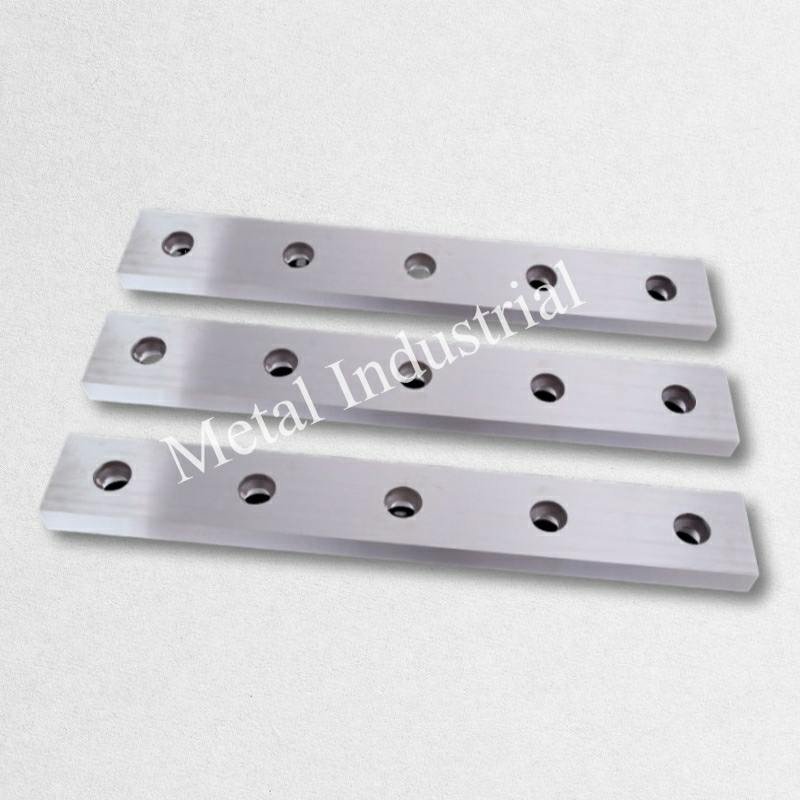
تبدأ العناية بشفرات قصّ المعادن بالتنظيف والتزييت. تساعد هذه الخطوات على منع التآكل المبكر والحفاظ على سلاسة القطع. كما أنها تطيل عمر معداتك. بتنظيف شفراتك وتزييتها يوميًا، يمكنك تجنب معظم المشاكل. استخدام المنتجات المناسبة مهم للحصول على نتائج جيدة.
تنظيف شفرات القص Metal
إجراءات التنظيف اليومية
نظّف شفرات قصّ المعادن بعد استخدامها يوميًا. يُزيل هذا الغبار والقطع المعدنية والزيوت الناتجة عن القطع. إليك كيفية القيام بذلك: ١. أوقف تشغيل الجهاز وتأكد من بقائه متوقفًا. ٢. امسح الشفرة بقطعة قماش ناعمة وجافة للتخلص من الأوساخ العالقة. ٣. في حال وجود أي مواد لزجة أو أوساخ صلبة، استخدم قطعة قماش خشنة ومنظفًا آمنًا. ٤. راقب حافة الشفرة جيدًا ومكان التقاءها بالجهاز. ٥. جفف الشفرة بمنشفة نظيفة لمنع صدأها. ٦. تحقق من عدم وجود أي شقوق أو تشققات أو بقع باهتة أثناء التنظيف.
نصيحة: تنظيف شفراتك يوميًا يحافظ على حدتها. كما يساعدك على اكتشاف التلف مبكرًا. هذه العادة تطيل عمر الشفرات وتمنع المشاكل المفاجئة.
مواد التنظيف الموصى بها
اختيار المنظف المناسب يحافظ على سلامة شفرات مقصّ المعادن. إليك بعض الخيارات الجيدة:
- كحول الأيزوبروبيل:يتخلص من الزيت والأوساخ ولكنه لا يؤذي الشفرة.
- المذيبات الخفيفة:تعمل منظفات الشفرات الخاصة على إزالة الأوساخ الصعبة ولكنها لا تسبب تلف المعدن.
- بخاخات تنظيف الشفرات:هذه البخاخات مصنوعة للآلات وتجف بسرعة.
لا تستخدم مواد كيميائية قاسية أو منظفات خشنة. فقد تخدش الشفرة أو تُضعفها. اقرأ واتبع دائمًا تعليمات الشركة المصنعة لأي منظف.
أفضل ممارسات التزييت
إرشادات تردد التزييت
التزييت لا يقل أهمية عن التنظيف. عليك وضع زيت على شفرات القص المعدنية والأجزاء المتحركة. هذا يُقلل الاحتكاك والحرارة، ويساعد جهازك على العمل بكفاءة ويمنع التآكل المبكر.
- إذا كنت تستخدم جهازك كثيرًا، قم بتزييت الشفرات والأجزاء بعد كل وردية.
- إذا كنت تستخدمه أحيانًا، استخدم الزيت مرة واحدة على الأقل في الأسبوع.
- إذا كنت تستخدمه نادرًا، فقم بفحصه وتزييته كل شهر.
يُساعد التزييت المنتظم على إطالة عمر الشفرات وتوفير المال على الإصلاحات. راجع دائمًا دليل جهازك للاطلاع على نصائح خاصة.
أنواع زيوت التشحيم وإيجابياتها وسلبياتها
يمكنك اختيار زيوت مختلفة لشفرات قصّ المعادن. لكلّ نوع مزايا وعيوب:
| نوع مادة التشحيم | الايجابيات | سلبيات |
|---|---|---|
| زيت معدني | من السهل الحصول عليها، رخيصة، وتناسب معظم الوظائف | يمكن أن تجمع الغبار، وقد تحتاج إلى المزيد من الزيت |
| زيت صناعي | يتحمل الحرارة، ويدوم لفترة أطول، ولا يتحلل بسرعة | تكلف أكثر |
| زيت صناعي حيوي | جيد للأرض، يساعد على إطالة عمر الشفرات، ويبرد جيدًا | تكلف أكثر، وقد يكون من الصعب العثور عليها |
| زيوت التشحيم الجافة | لا تجمع الغبار، جيدة للأماكن النظيفة | قد لا يوفر حماية جيدة إذا تم استخدامه كثيرًا |
بعض المحلات تستخدم الزيوت القابلة للتحلل الحيوي مثل B-Lub وCut Bio 1000هذه الزيوت تحمي الشفرات، وتبردها جيدًا، وهي أفضل للبيئة. يمكنك أيضًا استخدام سوائل شبه اصطناعية أو مستحلبات دقيقة للتبريد والتزييت. استخدم دائمًا الزيت المناسب لجهازك واتبع إرشادات الشركة المصنعة.
ملاحظة: يساعد استخدام الزيت المناسب والالتزام بجدول زمني على عمل نظامك بشكل جيد ويحافظ على الشفرات في حالة جيدة.
منع الصدأ
توصيات بيئة التخزين
تخزين شفراتك بالطريقة الصحيحة يمنع الصدأ. حافظ على جفاف الهواء والتحكم بالرطوبة في ورشتك. إليك بعض النصائح:
- حافظ على الغرفة جافة ودع الهواء يتحرك باستخدام المراوح أو النوافذ المفتوحة.
- قم بتخزين الشفرات في مكان بارد وجاف بعيدًا عن الماء.
- اترك أبواب الماكينة مفتوحة بعد الاستخدام حتى تخرج الرطوبة.
- لا تضع الشفرات على الأرضيات الخرسانية مباشرة لأنها تحتفظ بالماء.
حافظ على درجة حرارة الغرفة بين 60 و75 درجة فهرنهايت، ورطوبة أقل من 50%. هذا يمنع تسرّب الماء والصدأ.
مثبطات الصدأ الشائعة
يمكنك استخدام مانعات الصدأ لحماية شفرات القص المعدنية. من بين الأنواع الشائعة:
- طلاءات الرش:رش طبقة رقيقة على الشفرة لمنع دخول الماء.
- الزيوت الواقية:امسح أو رش الزيت على الشفرة بعد التنظيف وقبل التخزين.
- أكياس هلام السيليكا:ضعها في صناديق التخزين لامتصاص الماء الزائد.
- السوائل المثبطة للتآكل:استخدم سوائل القطع التي تحتوي على مواد مانعة للصدأ أثناء العمل.
سوائل القطع الجيدة ذات نقاط الصدأ المنخفضة تساعد أيضًا على حماية الشفرات. حافظ على تركيز هذه السوائل بالمستوى المناسب، عادةً من 7% إلى 10%، للحصول على أفضل النتائج.
الحفاظ على نظافة الشفرات وتزييتها وجفافها يُطيل عمرها ويُحسّن أدائها. التنظيف الجيد والزيوت، بالإضافة إلى التخزين الذكي، يحميان شفراتك ويضمنان سير العمل بكفاءة في ورشتك.
ضبط شفرة القص
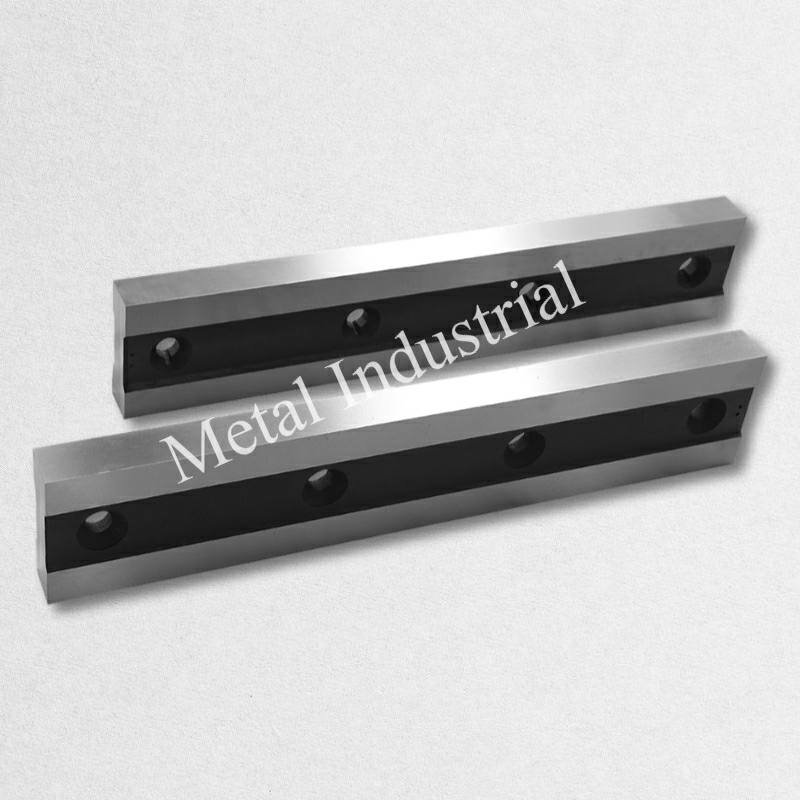
يضمن الضبط الصحيح لشفراتك تشغيل ماكينتك بسلاسة وأمان. عليك التحقق من الخلوص وقوة القطع والمحاذاة وضبطها للحصول على أفضل النتائج. سيرشدك هذا القسم خلال كل خطوة.
خلوص الشفرة
عملية التعديل خطوة بخطوة
يجب ضبط المسافة المناسبة بين الشفرات للحصول على قطع نظيفة وحماية معداتك. اتبع الخطوات التالية لضبط المسافة:
- قم بإيقاف تشغيل الجهاز وتأكد من أنه لا يمكن تشغيله.
- قم بتبديل المفتاح إلى وضع التعديل.
- قم بفك جهاز القفل الذي يثبت فجوة الشفرة.
- اضبط الخلوص بناءً على سُمك المعدن. استخدم مقياسًا أو شرائح معدنية لقياس الفجوة.
- يجب أن تكون الفجوة حوالي 5% إلى 10% من سمك المادة.
- قم بقفل الجهاز مرة أخرى لتأمين الإعداد.
- قم بقص تجريبي وتحقق من الحافة. عدّلها إذا لاحظت نتوءات أو بقعًا خشنة.
نصيحة: استخدم دائمًا مقياسًا دقيقًا لفحص الفجوة. تساعدك هذه الأداة على الحصول على قياس دقيق.
الخلوصات الموصى بها للمواد المختلفة
يعتمد الخلوص المناسب على نوع المعدن الذي تقطعه. استخدم هذا الجدول للعثور على الإعداد الأمثل:
| نوع المادة | الخلوص الموصى به (% من السُمك) |
|---|---|
| الألومنيوم | 3-5% |
| الفولاذ المعتدل | 5-8% |
| الفولاذ المقاوم للصدأ | 7-10% |
| القوة العالية تدوم | 10-14% |
إذا استخدمتَ مساحةً أكبر من اللازم، فستحصل على نتوءاتٍ كبيرة وحوافٍ خشنة. إذا كانت المساحة صغيرةً جدًا، فإن الشفرة تتآكل أسرع وقد تترك خطوط قطع مزدوجة. تحقق دائمًا من جودة القطع واضبطها حسب الحاجة.
استخدام الحشوات للتعديل الدقيق
أحيانًا، قد تحتاج إلى إجراء تغييرات طفيفة جدًا على الفجوة. تساعد الحشوات على ذلك. ضع حشوات معدنية رفيعة بين الشفرة والحامل لزيادة الفجوة أو تقليلها. تُجدي هذه الطريقة نفعًا إذا لاحظت تآكلًا غير متساوٍ أو إذا قطعت مواد خاصة.
- استخدم الحشوات عندما يشير مقياس القياس إلى أن الفجوة ليست متساوية على طول الشفرة.
- قم بإضافة أو إزالة الحشوات حتى تتطابق الفجوة مع هدفك.
- بعد الضبط، قم بفحص الطول الكامل للشفرة باستخدام المقياس.
ملاحظة: احرص دائمًا على إعادة فحص الفجوة بعد شد البراغي. قد يُغيّر الضغط الإعداد.
قوة القطع
كيفية ضبط قوة القطع
يجب أن تتناسب قوة القطع مع حالة المادة والشفرة. تتيح لك معظم الآلات ضبط القوة باستخدام تحكم هيدروليكي أو ميكانيكي.
- تحقق من دليل الجهاز لمعرفة إعداد الضغط أو القوة الصحيح.
- زيادة القوة للمعادن الأكثر سمكًا أو صلابة.
- قم بخفض القوة للمعادن الرقيقة أو اللينة.
- قم دائمًا باختبار قطعة صغيرة قبل البدء في عمل كبير.
الشفرة الحادة تحتاج إلى قوة أقل. إذا لاحظتَ صعوبةً في استخدام الآلة، فتحقق من حدتها واضبط القوة.
العوامل المؤثرة على إعدادات قوة القطع
هناك العديد من الأشياء التي تغير مقدار القوة التي تحتاجها:
- صلابة الشفرة: الشفرات الأكثر صلابة تدوم لفترة أطول وتقطع بشكل أفضل، ولكنها تحتاج إلى القوة المناسبة.
- حدة الشفرة: الشفرات الحادة تقطع بشكل أسهل وتحتاج إلى ضغط أقل.
- صلابة المادة: تحتاج المعادن الأكثر صلابة إلى مزيد من القوة.
- حجم وشكل الشفرة: تحتاج الشفرات الأكثر سمكًا إلى مزيد من القوة ولكنها تدوم لفترة أطول.
- الصيانة: تعمل الشفرات النظيفة والمحافظ عليها جيدًا بشكل أفضل وتحتاج إلى قوة أقل.
شهد متجر معادن حسّن صلابة الشفرات وصيانتها انخفاضًا في عمليات الاستبدال بمقدار 45%، ووفر $12,000. كما زاد مصنع إعادة تدوير آخر من سرعة العمل بمقدار 20%، وخفض التكاليف بمقدار 35% بعد التحول إلى شفرات أكثر صلابة. تُظهر هذه النتائج أن العناية الجيدة والإعدادات الصحيحة توفر المال وتُحسّن العمل.
تنسيق
إجراء المحاذاة
المحاذاة الصحيحة تضمن استقامة قطعك وسلامة ماكينتك. اتبع الخطوات التالية للمحاذاة والمعايرة الصحيحة:
- قم بإيقاف تشغيل الجهاز وقفله.
- استخدم مسطرة أو أداة دقيقة للتحقق من أن الشفرات متوازية.
- قم بضبط حامل الشفرات بحيث تتطابق الشفرتان بشكل متساوٍ من النهاية إلى النهاية.
- استخدم مربعًا للتأكد من أن الشفرات في زاوية قائمة على الطاولة.
- قم بربط جميع البراغي بالتساوي، من أحد الطرفين إلى الطرف الآخر.
- تأكد من المحاذاة مرة أخرى بعد الشد.
- قم بإجراء قطع اختباري وفحص الحافة بحثًا عن خطوط مزدوجة أو نتوءات.
يمكن للأنظمة الآلية أن تساعد في الحفاظ على دقة المحاذاة. ترصد أجهزة المراقبة الفورية المشاكل مبكرًا، مما يتيح لك إصلاحها قبل أن تتسبب في مشاكل. كما أن المعايرة الدورية والفحوصات الوقائية تحافظ على أداء جهازك ضمن الحدود الآمنة.
ملاحظة: قد يؤدي سوء المحاذاة إلى انخفاض قوة وجودة قطعك بنسبة تصل إلى 30%. تأكد دائمًا من المحاذاة قبل بدء أي عمل جديد.
أخطاء المحاذاة الشائعة وحلولها
يرتكب الكثيرون نفس الأخطاء عند ضبط المحاذاة. إليك بعض الأمثلة التي يجب الانتباه إليها:
- شد غير متساوٍ: إذا شدّتَ البراغي على جانب واحد أولاً، فقد تلتوي الشفرة. احرص دائمًا على شد البراغي بخطوات صغيرة، من جانب إلى آخر.
- قراءة خاطئة للمقاييس: تأكد من أدواتك وقياساتك جيدًا. خطأ صغير قد يُسبب مشاكل كبيرة.
- تخطي المعايرة: إذا لم تقم بفحص المحاذاة بشكل متكرر، فقد تفوتك التحولات الصغيرة التي تؤدي إلى قطع سيئة.
- تجاهل ردود الفعل: إذا رأيت نتوءات أو سمعت أصواتًا غريبة، فتوقف وتحقق من المحاذاة على الفور.
لإصلاح هذه المشكلات:
- استخدم مفتاح عزم الدوران لربط البراغي بالتساوي.
- معايرة أدواتك قبل كل استخدام.
- قم بإعداد جدول لإجراء فحوصات المحاذاة بشكل منتظم.
- استمع إلى جهازك وافحص القطع بشكل متكرر.
نصيحة: المحاذاة والمعايرة الجيدتان تمنعان عيوبًا مثل الكسور المزدوجة والنتوءات. كما تحافظان على سلامة آلتك وجودة عملك.
الطحن والشحذ
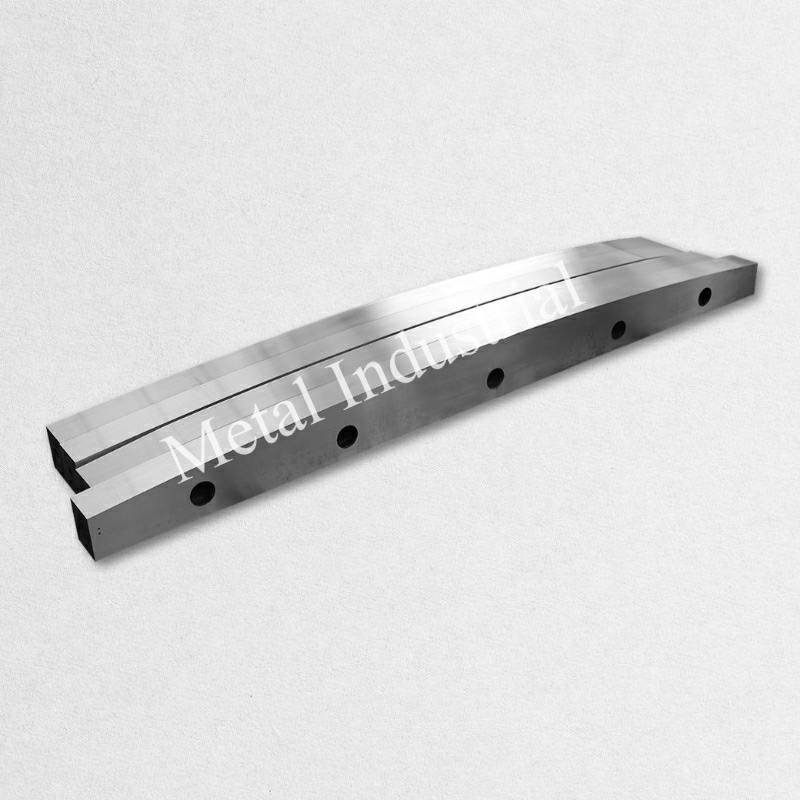
متى يجب الطحن
يجب أن تعرف متى تحتاج شفرتك إلى الصقل. يُعدّ البهتان العلامة الرئيسية. إذا لاحظتَ حوافًا خشنة أو نتوءات في قطعك، فمن المرجح أن شفرتك تعاني من البهتان. قد تلاحظ أيضًا أنك بحاجة إلى بذل المزيد من القوة لقطع المعدن. هذا الجهد الإضافي يعني أن البهتان قد بدأ يظهر. افحص دائمًا أي خدوش أو تآكل غير متساوٍ أو أي تغيير في جودة القطع. هذه علامات واضحة على البهتان.
افحص شفرتك باستمرار. ابحث عن أي بُهتان أو تشققات أو نتوءات ظاهرة. دوّن كل فحص. يساعدك هذا على تحديد أنماط البُهتان وتحديد الوقت الأمثل للشحذ. إذا كنت تستخدم شفرتك يوميًا، فقد تظهر البُهتان بسرعة. أدر حواف الشفرة لتوزيع التآكل. هذه الخطوة البسيطة تساعد على تقليل البُهتان والحفاظ على حدة شفرتك لفترة أطول.
نصيحة: استخدم اختبارات غير إتلافية، مثل المسح بالموجات فوق الصوتية، لاكتشاف العيوب الخفية. هذا يُساعدك على تجنب تعطل الشفرة المفاجئ بسبب البلى العميق أو الشقوق.
التقنيات المناسبة
من المهم جدًا شحذ شفرة السكين بالطريقة الصحيحة. إذا شحذت أكثر من اللازم، فقد تُضعف الشفرة. وإذا شحذت أقل من اللازم، فستبقى باهتة ولن تتحسن جودة قطعك. استخدم دائمًا آلة شحذ دقيقة. تحافظ هذه الأداة على زاوية الحافة صحيحة وتزيل الباهتة بالتساوي.
اتبع الخطوات التالية للحصول على طحن آمن وفعال:
- نظّف الشفرة قبل الطحن. الأوساخ قد تُسبب طحنًا غير متساوٍ وتُخفي بهتان الشفرة.
- اضبط ماكينة الطحن على الزاوية الموصى بها من قبل الشركة المصنعة. هذا يحافظ على قوة الشفرة وحدّتها.
- اطحن ببطء وتحقق من الحافة باستمرار. توقف إذا لاحظت أي علامات ارتفاع في درجة الحرارة، فقد يؤدي ذلك إلى عودة البهتان بشكل أسرع.
- استخدم سوائل التبريد أثناء الطحن. هذا يمنع تراكم الحرارة ويحمي الشفرة من التلف.
- بعد الطحن، افحص الشفرة بحثًا عن أي بقايا باهتة أو بقع غير مستوية.
تساعدك أنظمة الشحذ الآلية على تجنب الأخطاء البشرية. تحافظ هذه الآلات على زاوية الحافة مثالية، وتزيد من عمر الشفرة حتى 20%. اتبع دائمًا إرشادات الشركة المصنعة لسرعة وزاوية الشحذ. هذا يقلل من بِلَدة الشفرة ويحافظ عليها آمنة.
ملاحظة: لا تفرط في تحميل شفرتك بقطع مواد صلبة أو سميكة جدًا. هذا يُسبب خشونة الشفرة ويُقصّر عمرها.
احتفظ بشفرة السكين في مكان جاف وآمن بعد شحذها. التخزين الجيد يمنع عودة البهتان بسبب الصدأ أو التلف. الطحن والشحذ المنتظمان يمنعان البهتان ويساعدانك على الحصول على قطع نظيفة وآمنة في كل مرة.
التعامل والتخزين الآمن

إجراءات التعامل
يجب توخي الحذر عند نقل شفرات قص الخردة المعدنية. هذه الشفرات حادة وثقيلة، لذا السلامة مهمة جدًا. ارتدِ دائمًا معدات السلامة المناسبة. القفازات تحمي يديك من الجروح. نظارات السلامة تحمي عينيك من القطع المعدنية المتطايرة. الأحذية والخوذات الصلبة تساعد في الحفاظ على سلامة قدميك ورأسك في الأماكن المزدحمة.
- استخدم دائما القفازات، ونظارات السلامة، والأحذية، والخوذات الصلبة عندما تلمس الشفرات.
- لا تلمس الحافة الحادة. أمسك الشفرة من الجانبين أو استخدم أدوات خاصة لرفعها.
- حافظ على نظافة منطقة عملك. اجمع الخردة والأدوات لتجنب التعثر أو الانزلاق.
- اتبع خطوات القفل/التعليق قبل تنظيف الجهاز أو إصلاحه. هذا يمنع تشغيل الجهاز عن طريق الخطأ.
- استخدم واقيات ودروعًا على الآلات. فهي تحميك من الأجزاء المتحركة والحواف الحادة.
- يجب على العمال المُدرَّبين فقط نقل أو تركيب الشفرات. يُعلِّمك التدريب كيفية رفع وحمل الشفرات بالطريقة الصحيحة.
- ضع لافتات تحذيرية وحدد مناطق آمنة حول الآلات. هذا يُبقي الأشخاص غير المُدرَّبين بعيدًا عن الخطر.
- افحص الشفرات قبل استخدامها. ابحث عن أي شقوق أو تشققات أو بقع باهتة. غيّر أي شفرات تالفة فورًا لتجنب الحوادث.
نصيحة: استخدام آلات فرز الخردة يُساعدك على تقليل لمس الشفرات الحادة، مما يزيد من أمانك.
كما أن تنظيف الشفرات باستمرار وتغييرها بسرعة يحافظ على أمان منطقة عملك. فالشفرات النظيفة تعمل بشكل أفضل، وتكون أقل عرضة للانحشار أو الكسر المفاجئ.
ظروف التخزين
يُحافظ تخزين الشفرات بالطريقة الصحيحة على قوتها ويمنع الصدأ أو التلف. ضع الشفرات دائمًا في مكان جاف وبارد. فالهواء الرطب يُسبب الصدأ، مما قد يُضعف الشفرات ويُقصّر عمرها الافتراضي.
- ضع الشفرات على رفوف أو حوامل، وليس على الأرض. لا تضعها على أرضيات خرسانية لأن الخرسانة تحتفظ بالماء.
- احتفظ بالشفرات في غرفة ذات رطوبة منخفضة. استخدم المراوح أو أجهزة إزالة الرطوبة عند الحاجة.
- جفف الشفرات جيدًا بعد تنظيفها قبل تخزينها. أي ماء متبقٍ قد يُسبب الصدأ.
- ضع طبقة رقيقة من الزيت أو مانع الصدأ على الشفرة قبل تخزينها. هذا يوفر حماية إضافية.
- استخدم أكياس هلام السيليكا أو الأشياء التي تمتص الماء في صناديق التخزين للحفاظ على الهواء جافًا.
- غطِّ الشفرات بأغطية أو أغلفة. هذا يمنع دخول الغبار ويحميها من الصدمات.
- احتفظ بالشفرات بعيدًا عن المواد الكيميائية أو الأشياء التي يمكن أن تسبب الصدأ.
- افحص الشفرات المخزنة باستمرار. ابحث عن أي صدأ أو تلف، وأصلح المشاكل فورًا.
ملاحظة: يُساعد تخزين الشفرات جيدًا وتزييتها باستمرار على إطالة عمرها وتحسين أدائها. الشفرات النظيفة والجافة والمحمية تكون دائمًا جاهزة وآمنة للاستخدام.
استكشاف أخطاء شفرات القص Metal وإصلاحها
عند استخدام شفرات قص المعادن، قد تواجه بعض المشاكل. قد تكون هذه المشاكل بِلَدًا، أو تشققًا، أو عدم محاذاة، أو اهتزازًا. يُحافظ إصلاح هذه المشاكل على سلامة جهازك، كما يُساعدك على إجراء قطع دقيقة. يمكنك استخدام خطوات سهلة وأدوات بسيطة لإصلاح معظم المشاكل بسرعة.
البهتان والتقطيع
عدم ثبات شفرة الماكينة يُضعفها. قد تلاحظ حوافًا خشنة أو تحتاج إلى جهد أكبر للقطع. يحدث التشقق عندما تنكسر قطع صغيرة من حافة الشفرة. هاتان المشكلتان تُبطئان سرعتك وقد تُلحقان الضرر بجهازك.
لإصلاح بِلَوْن الشفرة، افحصها يوميًا. نظّفها وابحث عن علامات التآكل. إذا لاحظت بِلَوْنًا، اشحذ الشفرة أو غيّرها. استخدم دائمًا الشفرة المناسبة لكل مهمة. هذا يساعد على منع بِلَوْن الشفرة وتشققها مبكرًا. زيّن شفرتك باستمرار. تُخفّض زيوت التشحيم المصنوعة من مادة PTFE الاحتكاك بنسبة تصل إلى 55%. كما تُساعد على إطالة عمر الشفرة.
فيما يلي جدول بسيط لمساعدتك على تذكر ما يجب عليك فعله:
| مشكلة | خطوات استكشاف الأخطاء وإصلاحها |
|---|---|
| بلادة | شحذ أو استبدال الشفرة؛ تنظيف يومي |
| التقطيع | استخدم الشفرة الصحيحة؛ اضبط القوة؛ قم بالتزييت |
نصيحة: نظّف شفرتك يوميًا واحرص على شحذها باستمرار. هذا يُطيل عمرها من ٢٥ إلى ٣٥١TP4T. كما يُسهّل إصلاح البهتان.
مشاكل عدم المحاذاة
يؤدي عدم المحاذاة إلى عدم تساوي القطع وإصدار ضوضاء. قد تلاحظ أن حجم قطعك ليس مناسبًا. لإصلاح هذا الخلل، افحص شفراتك أسبوعيًا. استخدم مسبار معايرة أو ماسحًا ضوئيًا ليزريًا لقياس موضع الشفرة. تستطيع هذه الأدوات اكتشاف أخطاء صغيرة جدًا، حتى 0.1 مم.
دوّن أي تغييرات تُجريها في سجل. يساعدك هذا على رؤية الأنماط وتتبع الإصلاحات. إذا وجدتَ أي خلل في المحاذاة، فاتبع الخطوات اللازمة لإصلاحه. استخدم مسطرةً ومسطرةً لفحص الشفرة. شدّ البراغي بالتساوي وتحقق منها مرة أخرى. المحاذاة الجيدة تُحافظ على استقامة القطع وسلامة آلتك.
ملاحظة: يُساعدك فحص عدم المحاذاة أسبوعيًا على اكتشاف المشاكل مُبكرًا. هذا يُوقف الاهتزاز وأخطاء القطع قبل تفاقمها.
الاهتزاز والضوضاء
الاهتزاز والضوضاء يدلان على وجود خلل في شفرتك أو ماكينتك. ابدأ بفحص قطعك. قد تشير القطع غير المتساوية، أو النتوءات، أو الأصوات العالية إلى عدم اتساق القطع أو عدم محاذاة القطع.
افحص الشفرة بحثًا عن أي تآكل أو تلف. تأكد من محاذاة الشفرة بشكل صحيح وإحكام ربط البراغي. استخدم مستشعر إزاحة للتحقق من موضع الشفرة. إذا وجدت مشكلة، فأصلحها فورًا. كما أن تنظيف الشفرة وتزييتها يساعدان في إيقاف الاهتزاز. قم بإجراء فحص صيانة شامل شهريًا. هذا يساعدك على اكتشاف المشاكل الخفية وإصلاحها.
تنبيه: إصلاح الاهتزازات مبكرًا يمنع تلف الماكينة، ويحافظ على سلامة عملك.
باتباع هذه الخطوات، يمكنك إصلاح معظم مشاكل الشفرات بسرعة. الفحوصات اليومية والأسبوعية والشهرية تحافظ على شفراتك حادة وآمنة وجاهزة للاستخدام.
معايير استبدال الشفرة
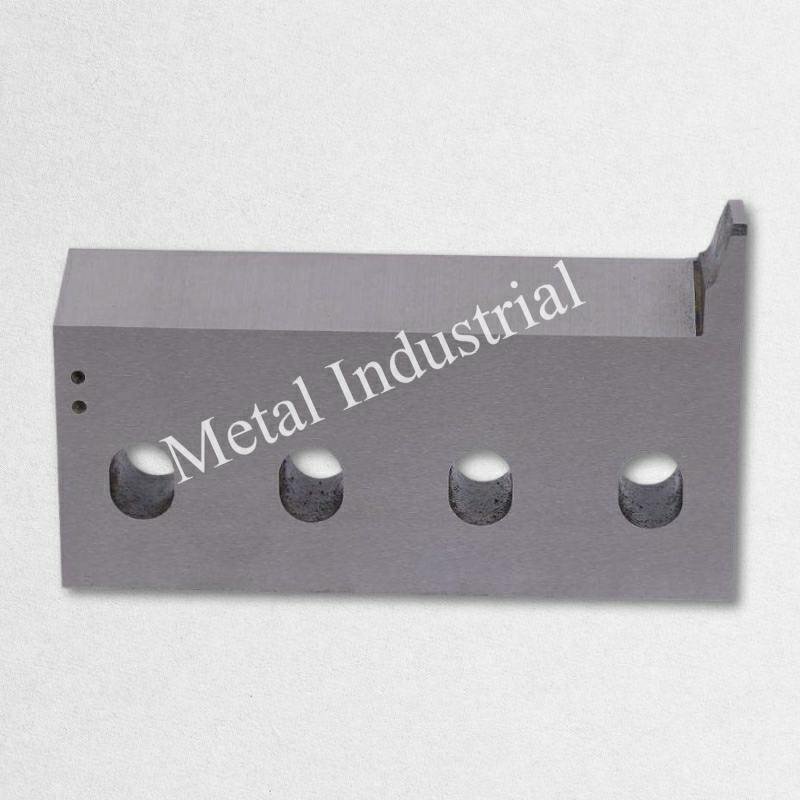
يجب أن تعرف متى يجب تغيير شفرات القص. هذا يحافظ على سلامة جهازك ويضمن جودة عملك. انتبه للعلامات التي تشير إلى ضرورة استبدال الشفرة. إذا أهملت هذه العلامات، فقد تتلف جهازك، وقد تتعرض أنت أو غيرك للأذى.
علامات الاستبدال
ابحث عن هذه العلامات التي تعني أنك بحاجة إلى شفرة جديدة:
الشقوق أو الرقائق المرئية
افحص شفراتك بحثًا عن أي شقوق أو خدوش. حتى الشقوق الصغيرة قد تتسع بسرعة. وجود شقوق على الحافة يجعل القطع خشنًا وغير ناعم. إذا لاحظت أي شقوق أو خدوش، فغيّر الشفرة فورًا. استخدام شفرة مكسورة قد يؤدي إلى كسرها أثناء الاستخدام.
التآكل المفرط الذي يتجاوز التسامح
قم بقياس شفراتك بانتظام للتحقق من سُمكها. إذا كانت الشفرة رقيقة جدًا، فأنت بحاجة إلى شفرة جديدة. الشفرات البالية لا تقطع جيدًا، كما أنها تُصعّب عمل ماكينتك. اتبع دائمًا قواعد السُمك من الشركة المصنعة.
جودة القطع رديئة (النتوءات، الحواف الخشنة)
انظر إلى قطعك. إذا لاحظت نتوءات أو حوافًا خشنة، فقد تكون شفرتك باهتة. القطع السيئ يعني أن الشفرة ليست حادة. هذه علامة واضحة على حاجتك إلى شفرة جديدة.
التشويش المتكرر أو زيادة مقاومة القطع
انتبه إذا كانت آلتك تعلق كثيرًا أو يصعب استخدامها. الحاجة إلى قوة أكبر تعني أن الشفرة لا تعمل بشكل صحيح. هذا قد يُلحق الضرر بجهازك. لا تنتظر، استبدل الشفرة فورًا.
تشوه أو اعوجاج الشفرة
تحقق من شكل شفرتك. إذا كانت منحنية أو ملتوية، فلن تتمكن من القطع بشكل مستقيم. كما أن الشفرات المشوهة قد تُسبب خللاً في محاذاة الماكينة. غيّر أي شفرة ليس شكلها صحيحًا.
ضوضاء غير عادية أثناء التشغيل
انتبه للأصوات الغريبة عند استخدام المقص. قد يشير الصرير أو الطحن أو الطرق إلى كسر الشفرة أو ارتخائها. هذه الأصوات تحذيرية. أوقف المقص وتحقق من وجود أي تلف. إذا وجدت أي مشكلة، فاحصل على شفرة جديدة فورًا.
نصيحة: دوّن كل مرة تفحص فيها شفرة أو تغيرها. يساعدك هذا على معرفة مدة صلاحية الشفرات واكتشاف المشاكل مبكرًا.
مخاطر التأخير
الانتظار طويلًا لتغيير الشفرات أمرٌ محفوفٌ بالمخاطر. قد يُسبب التأخير مشاكلَ تتعلق بالسلامة، وتلفًا للآلة، وتكلفةً أعلى.
زيادة مخاطر السلامة (إصابة المشغل)
قد تنكسر الشفرات القديمة أو المكسورة فجأة. قد تتطاير القطع الحادة وتؤذي الناس. تغيير الشفرات بسرعة يضمن سلامة الجميع.
الضرر المحتمل للآلة (عدم المحاذاة، التحميل الزائد)
قد يؤدي تآكل الشفرة أو ثنيها إلى اختلال محاذاة جهازك، مما يزيد الضغط على الأجزاء المتحركة. مع مرور الوقت، قد يؤدي ذلك إلى كسر بعض الأجزاء أو الجهاز بأكمله. تغيير الشفرات في الوقت المناسب يحمي جهازك.
انخفاض جودة القطع وكفاءة الإنتاج
إذا استخدمت شفرة باهتة أو مكسورة، ستبدو قطعك سيئة. قد تضطر إلى إعادة العمل أو التخلص من الخردة. هذا يُبطئك ويُهدر المواد. تغيير الشفرة بسرعة يُحافظ على سلاسة عملك.
تكاليف صيانة أعلى على المدى الطويل
قد يؤدي تأجيل تغيير الشفرات إلى تفاقم المشاكل الصغيرة. قد تحتاج إلى إصلاح أكثر من مجرد الشفرة. فالإصلاحات المتكررة تكلف مالًا أكثر وتستغرق وقتًا أطول. أما تغيير الشفرات في الوقت المحدد فيوفر المال.
خطر فشل الشفرة بالكامل أثناء التشغيل
إذا تجاهلت جميع العلامات، فقد تنكسر الشفرة تمامًا. قد يؤدي هذا إلى توقف جهازك ويُشكل خطرًا كبيرًا. قد تحتاج إلى إصلاحات طارئة أو شراء جهاز جديد. تجنب هذا بالتخطيط لتغيير الشفرة بانتظام.
| خطر التأخير | ماذا يمكن أن يحدث | كيفية الوقاية منه |
|---|---|---|
| إصابة المشغل | الجروح، المعادن المتطايرة، الحوادث الخطيرة | استبدال الشفرات في الوقت المحدد |
| تلف الآلة | عدم المحاذاة، الأجزاء المكسورة، وقت التوقف عن العمل | فحص واستبدال مبكر |
| جودة القطع رديئة | نتوءات، حواف خشنة، مواد مهدرة | استخدم شفرات حادة |
| تكاليف الصيانة العالية | مزيد من الإصلاحات، ووقت تعطل أطول | استبدالات الجدول الزمني |
| فشل الشفرة الكامل | توقف الآلة، وتحتاج إلى إصلاحات طارئة | انتبه لعلامات التحذير |
ملاحظة: تحافظ على سلامة فريقك وجهازك بتغيير الشفرات بسرعة. لا تنتظر حدوث مشكلة كبيرة.
استبدال شفرات القص الخردة Metal
استبدال الخاص بك شفرات قص الخردة المعدنية يحافظ على سلامة ماكينتك ونظافة قطعك. عليك اتباع الخطوات الصحيحة لتجنب الإصابات والتأكد من عمل ماكينتك بكفاءة بعد الاستبدال. التحضير الجيد، والاستبدال الدقيق، والمعايرة الصحيحة تساعدك على الحصول على أفضل النتائج.
خطوات التحضير
ابدأ بتجهيز مساحة عملك. أوقف تشغيل الآلة وأغلقها بإحكام لمنع تشغيلها عن طريق الخطأ. اجمع جميع الأدوات التي تحتاجها، مثل مفاتيح الربط ومفكات البراغي وقفازات السلامة. ارتدِ نظارات وقفازات واقية لحماية يديك وعينيك. نظّف المنطقة المحيطة بالشفرة. أزل أي بقايا معدنية أو زيوت. هذا يساعدك على رؤية ما تفعله ويحافظ على سلامتك.
افحص الشفرة الجديدة قبل تركيبها. ابحث عن أي شقوق أو كسور أو صدأ. تأكد من أن الشفرة تتناسب مع حجم وشكل جهازك. اقرأ دليل الجهاز للاطلاع على أي تعليمات خاصة باستبدال الشفرة. باتباع هذه الخطوات، تقلّل من احتمالية حدوث أخطاء.
عملية الاستبدال
يمكنك الآن البدء في عملية الاستبدال. استخدم الأدوات المناسبة لفك البراغي أو المثبتات التي تُثبّت الشفرة القديمة. انزع الشفرة بحرص. أبعد يديك عن الحافة الحادة. ضع الشفرة القديمة في مكان آمن لتجنب أي أذى.
ركّب الشفرة الجديدة في الموضع الصحيح. تأكد من محاذاتها مع الشفرة الثابتة. أدخل البراغي وشدّها يدويًا أولًا. استخدم مفتاح ربط لشدّ كل برغي تدريجيًا، من أحد طرفيه إلى الآخر. هذا يحافظ على استقامة الشفرة ويساعد في محاذاتها ومعايرتها. لا تُشدّ البراغي أكثر من اللازم. تأكد من أن الشفرة ثابتة ومستوية ولا تتأرجح.
نصيحة: استخدم دائمًا نفس نوع البراغي والغسالات الأصلية. هذا يحافظ على ثبات الشفرة ويساعد في المعايرة.
فحوصات ما بعد الاستبدال
بعد الانتهاء من عملية الاستبدال، عليك التحقق من عملك. أولًا، انظر إلى الشفرة وتأكد من استقامتها. استخدم مقياسًا دقيقًا للتحقق من الفجوة بين الشفرات. اضبط الفجوة إذا لزم الأمر. تُسمى هذه الخطوة المعايرة. المعايرة الجيدة تضمن لك قطعًا سلسًا وتحمي ماكينتك.
قم بإجراء قطع تجريبي بقطعة صغيرة من خردة معدنية. انتبه لأي نتوءات أو حواف خشنة أو أصوات غريبة. إذا لاحظت أي مشاكل، فتوقف وتحقق من موضع الشفرة. كرر عملية المعايرة حتى تبدو القطع نظيفة. دوّن تاريخ الاستبدال والمعايرة في سجل الصيانة. يساعدك هذا على تتبع عمر الشفرة والتخطيط لعمليات الاستبدال المستقبلية.
ملاحظة: المعايرة المنتظمة بعد كل استبدال تحافظ على سلامة جهازك ودقة قطعك.
شفرات القص Metal المخصصة
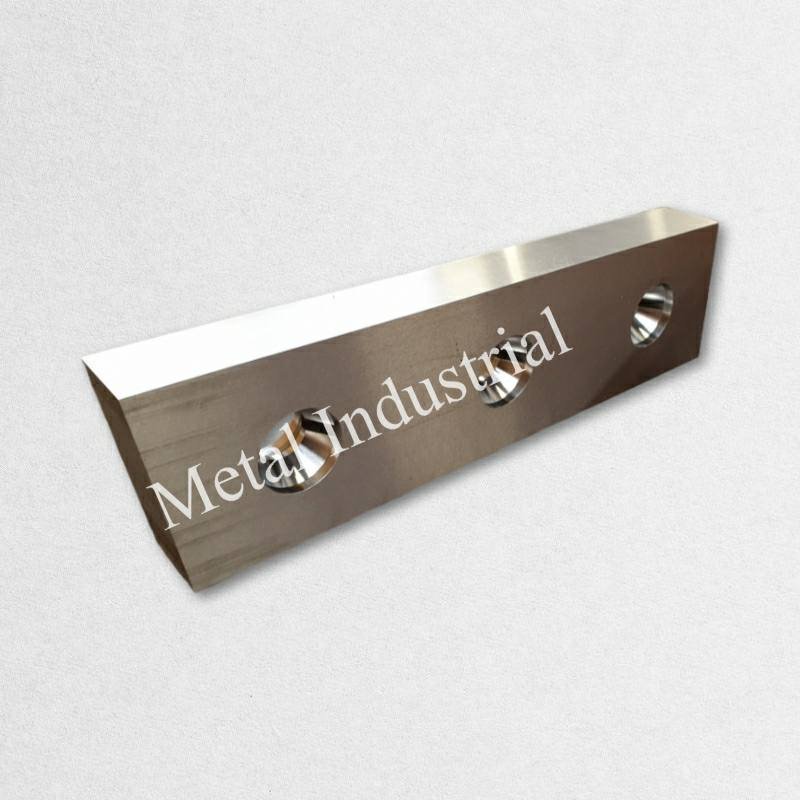
فوائد الشفرات المخصصة
يمكنك الحصول على نتائج أفضل باستخدام شفرات مخصصة لأعمال قطع المعادن. تناسب الشفرات المخصصة آلتك وموادك بدقة. هذا يعني حصولك على قطع أنظف، وهدر أقل، وعمر أطول للشفرة. كما أنك تقضي وقتًا أقل في إصلاح الأعطال أو تغيير الشفرات.
فيما يلي جدول يوضح كيفية مقارنة الشفرات المخصصة بالشفرات القياسية:
| متري | الشفرات القياسية | شفرات مخصصة/عالية الجودة | التأثير المالي / الفائدة |
|---|---|---|---|
| عمر الشفرة | 3 أشهر | 9 أشهر | بدائل أقل، تكاليف أقل |
| وقت التوقف (شهريًا) | 20 ساعة | 10 ساعات | 50% وقت تعطل أقل، $80,000 إنتاجية إضافية سنويًا |
| نفايات المواد | 5% من الإجمالي | 2% من الإجمالي | $150,000 يتم توفيرها كل عام |
| تكاليف الصيانة | $30,000/سنة | $15,000/سنة | $15,000 تم توفيرها في الصيانة |
يمكن أن تساعدك الشفرات المخصصة أيضًا في:
- قم بتقليص وقت الدورة بمقدار 20%، حتى تتمكن من صنع المزيد من المنتجات كل شهر.
- قم بزيادة سرعة الإنتاج لديك بما يصل إلى 25%.
- قم بخفض معدل العيوب لديك، مما يعني عددًا أقل من الأجزاء السيئة.
- قم بتحسين عمر منتجاتك، مثل البطاريات، عن طريق إجراء قطع أنظف.
يساعدك استخدام الشفرات المخصصة على توفير المال والعمل بشكل أسرع والحصول على جودة أفضل كل يوم.
عندما تكون هناك حاجة للتخصيص
يُنصح بالتفكير في استخدام شفرات مُخصصة عندما لا تُلبي الشفرات العادية احتياجاتك. إذا كانت لديك مواد خاصة، أو أعمال شاقة، أو تحتاج إلى قطع دقيق للغاية، فإن الشفرات المُخصصة تُناسب احتياجاتك. إليك بعض العلامات التي تُشير إلى حاجتك إلى حل مُخصص:
- الشفرات الحالية لا تناسب جهازك أو وظيفتك.
- تحتاج إلى شكل أو حجم أو طلاء خاص لشفرتك.
- عملك يستخدم مواد يصعب قطعها أو يحتاج إلى حواف نظيفة للغاية.
- تريد تقليل النفايات وتوفير المال.
- يجب عليك الالتزام بقواعد السلامة أو الجودة الصارمة.
عملية الحصول على شفرة مخصصة يبدو عادة مثل هذا:
- ترسل عينة أو رسمًا لما تحتاجه.
- يقوم المصنع بتصميم ورسم الشفرة لك.
- تتحقق من التصميم وتوافق عليه قبل أن يتم تنفيذه.
تُستخدم في الشفرات المُخصصة أنواعٌ عالية الجودة من فولاذ الأدوات، أو الفولاذ المقاوم للصدأ، أو كربيد التنغستن. هذه المواد تُناسب عملك وتدوم لفترة أطول. تستخدم العديد من الصناعات، مثل صناعة الطيران والسيارات والقطاع الطبي، شفرات مُخصصة لتلبية احتياجاتها الخاصة.
ملاحظة: تساعدك الشفرات المخصصة على حل المشكلات التي لا تستطيع الشفرات القياسية حلها. فهي تمنحك تحكمًا أكبر في عملك.
نظرة عامة على نانجينغ Metal
عندما تحتاج إلى مُصنِّع شفرات مُخصَّص موثوق، فإن شركة Nanjing Metal هي الخيار الأمثل في هذا المجال. تتمتع هذه الشركة بخبرة 20 عامًا في تصنيع الشفرات الصناعية لمختلف الأغراض. يُصمِّم فريقها الماهر ويصنع شفرات تُلبِّي احتياجاتك بدقة.
نانجينغ Metal تستخدم الشركة طلاءات متطورة مثل نتريد التيتانيوم (TiN) وكربونات التيتانيوم (TiCN). تُطيل هذه الطلاءات عمر الشفرات حتى 40%، وتُقلل وقت الصيانة بمقدار 30%. تتمتع الشركة بسمعة طيبة في الجودة، وتعمل عن كثب مع العملاء في تصنيع البطاريات وإعادة التدوير وغيرها من المجالات. تُساعدك حلولها المُخصصة على الحصول على قطع خالية من النتوءات، وعيوب أقل، ومنتجات أكثر أمانًا.
يمكنك الاعتماد على نانجينغ Metal لتوفير شفرات تناسب ماكينتك وعملك. يركزون على الجودة والخدمة السريعة ورضا العملاء. إذا كنت ترغب في معرفة المزيد أو تحتاج إلى شفرة مخصصة، يمكنك اتصل بنا مهندس المبيعات الخاص بهم للحصول على المساعدة.
قائمة التحقق من صيانة القص

مرجع سريع
يمكنك الحفاظ على أداء مقصّتك المعدنية بكفاءة باستخدام قائمة تدقيق بسيطة. يساعدك هذا الدليل السريع على تذكر كل خطوة مهمة. استخدمه يوميًا وأسبوعيًا للحفاظ على سلامة العمل وسلاسة العمل.
🛠️ قائمة التحقق اليومية
- نظّف الجهاز. امسح الغبار والقطع المعدنية والأوساخ من جميع أجزائه.
- افحص الشفرات بحثًا عن حدّتها أو تشققاتها أو شقوقها. تأكد من أن كل شفرة في مكانها الصحيح.
- قم بتزييت جميع الأجزاء المتحركة، مثل أدلة الشفرات والشرائح.
- التحقق من عدم وجود تسريبات أو أضرار في الأنظمة الهيدروليكية والهوائية.
- تأكد من أن وسائل الحماية مثبتة ومثبتة بشكل صحيح.
- اختبر أزرار إيقاف الطوارئ لمعرفة ما إذا كانت تعمل.
نصيحة: قم دائمًا بإيقاف تشغيل الجهاز قبل تنظيفه أو فحصه أو إصلاحه.
📅 قائمة التحقق الأسبوعية
- قم بزيت المحامل والتروس.
- افحص مستوى زيت الهيدروليك. ابحث عن أي زيت متسخ أو تسريبات في الخراطيم.
- افحص الأسلاك الكهربائية بحثًا عن إحكامها وأي ضرر.
- تأكد من أن الشفرة محاذية وما زالت حادة.
- معايرة مقياس الظهر وتأكد من أنه يتحرك بسلاسة.
- تنظيف أنظمة الزيت والهواء.
📝 الصيانة الدورية والسلامة
| مهمة | عدد المرات | ما يجب القيام به |
|---|---|---|
| فحص الشفرة | يومي/أسبوعي | التحقق من وجود أي تآكل أو شقوق أو حواف باهتة |
| فحص السوائل الهيدروليكية | أسبوعي | أضف أو غيّر السائل إذا لزم الأمر |
| فحص النظام الكهربائي | أسبوعي | شد وفحص جميع الأسلاك |
| تدريب المشغل | جاري | تعليم الاستخدام الآمن وما يجب فعله في حالات الطوارئ |
| تسجيل جميع عمليات التفتيش | في كل مرة | اكتب ما تجده وتصلحه |
- استخدم دائمًا خطوات القفل/التعليق قبل إصلاح أو تغيير أي شيء.
- لا تضع يديك أبدًا تحت الأجزاء الحادة أو المتحركة.
- استخدم الأدوات المناسبة للشفرات الحادة والخردة.
- ارتدِ نظارات السلامة والقفازات والأحذية وحماية الأذن.
- قم بربط شعرك الطويل للخلف واحتفظ بالملابس قريبة من جسمك.
ملاحظة: تساعدك قائمة التحقق الجيدة على اكتشاف المشاكل مبكرًا. يمكنك منع الحوادث والحفاظ على جهازك يعمل لفترة أطول.
🚨 قائمة التحقق من حالات الطوارئ واستكشاف الأخطاء وإصلاحها
- تعرف على مكان أزرار التوقف في حالات الطوارئ واختبرها بشكل متكرر.
- اتبع قواعد القفل/التعليق قبل إصلاح أي شيء.
- إذا لاحظت أي تسريبات، أو سمعت أصواتًا غريبة، أو تعرضت لجروح بالغة، فتوقف وافحص الجهاز.
- قم بإصلاح أي ضرر على الفور حتى لا يزداد الأمر سوءًا.
نداء: إن استخدام قائمة التحقق من استكشاف الأخطاء وإصلاحها يوميًا يحافظ على سلامتك ويساعدك على توفير المال في الإصلاحات.
التعليمات
كم مرة يجب عليك فحص شفرات القص المعدنية الخاصة بك؟
افحص شفراتك يوميًا قبل بدء العمل. ابحث عن أي شقوق أو تشققات أو حواف باهتة. تساعدك الفحوصات اليومية على اكتشاف المشاكل مبكرًا والحفاظ على سلامة جهازك.
ما هي أفضل طريقة لتنظيف شفرات القطع المعدنية؟
امسح الشفرات بقطعة قماش ناعمة بعد كل استخدام. استخدم كحول الأيزوبروبيل أو منظفًا خفيفًا للأوساخ الصعبة. جفف الشفرة جيدًا دائمًا لمنع الصدأ.
كيف تعرف متى يجب استبدال الشفرة؟
انتبه للشقوق أو الخدوش أو القطع الخشن. إذا لاحظت نتوءات أو شعرت بأن الشفرة باهتة، فقد حان وقت تغييرها. قِس سُمكها وقارنه بدليل المُصنِّع.
هل يمكنك شحذ شفرة غير حادة، أم يجب عليك دائمًا استبدالها؟
يمكنك شحذ شفرة حادة إذا لم تكن بها شقوق أو تشققات عميقة. استخدم ماكينة شحذ واتبع الزاوية الصحيحة. استبدل الشفرة إذا لم يُحل الشحذ المشكلة.
ما هي الطريقة الأكثر أمانًا للتعامل مع الشفرات وتخزينها؟
ارتدِ دائمًا قفازات ونظارات واقية. أمسك الشفرات من الجانبين، لا من الحافة. خزّن الشفرات في مكان جاف على رفوف أو رفوف. استخدم واقيات الزيت أو الصدأ لحمايتها.
لماذا يعتبر محاذاة الشفرة أمرًا مهمًا لجودة القطع؟
المحاذاة الصحيحة تضمن قطعًا مستقيمة ونظيفة. المحاذاة السيئة تُسبب نتوءات وحوافًا خشنة، وقد تُتلف ماكينتك. افحص المحاذاة بانتظام باستخدام مسطرة أو مربع.
أين يمكنك الحصول على شفرات صناعية مخصصة للأعمال الخاصة؟
يمكنك طلب شفرات مخصصة من مصنع موثوق. تتمتع شركة نانجينغ Metal بخبرة 20 عامًا في تصنيع الشفرات الاحترافية. يصمم فريقها ويصنع شفرات تناسب احتياجاتك.
انظر أيضا
أفضل النصائح لاختيار شفرة قص التمساح
إطلاق العنان لأداء القطع: دليل شامل لمواد السكاكين الصناعية الشائعة
تحسين أداء الشفرات الصناعية: دليل شامل لطلاء الشفرات وتطبيقاتها ومزاياها
تأثير المعالجة بالتبريد العميق على السكاكين والشفرات الصناعية: تحسين الأداء والمتانة والكفاءة
اكتشاف أسرار تصنيع السكاكين الآلية: دليل شامل للمعالجة الحرارية لتحسين أداء الشفرة!

